Search
Remove Ads
Advertisement
Search Results
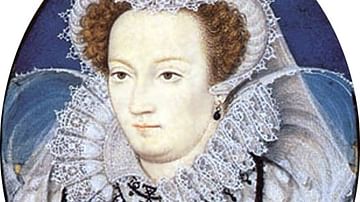
Definition
Mary, Queen of Scots
Mary, Queen of Scots was the queen of both Scotland (r. 1542-1567) and briefly, France (r. 1559-1560). Obliged to flee Scotland, the queen was imprisoned for 19 years by Elizabeth I of England (r. 1558-1603) and finally executed for treason...

Video
James IV of Scotland: Stories from Scotland's Past
James IV of Scotland Stories from Scotland's past. King James IV of Scotland was the last king to die on the battlefield in Britain. He was the last in a long line of rulers, particularly from Scotland, to meet their end in such a manner...
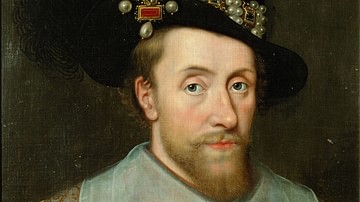
Definition
James I of England
James I of England (r. 1603-1625), who was also James VI of Scotland (r. 1567-1625), was the son of Mary, Queen of Scots, and he unified the thrones of Scotland and England following the death of Queen Elizabeth I of England (r. 1558-1603...
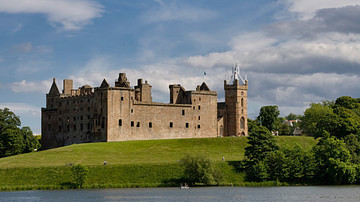
Image Gallery
A Gallery of Standing Stones, Cairns, and Castles of Scotland
Scotland has a rich history dating back to seasonal settlements around c. 10,500 BCE and permanent residences by c. 7000 BCE. Neolithic ceremonial sites such as the Ness of Brodgar were established by c. 3500 BCE, and communities like Skara...
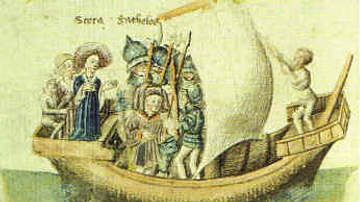
Definition
Scotichronicon
The Scotichronicon is a 15th Century CE legendary chronicle by Walter Bower (c. 1385 – 1449 CE) which recounts the history of Scotland and the Scottish people. The Scotichronicon begins with the Biblical Creation story and ends with the death...
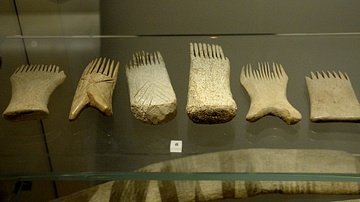
Image
Weaving Combs from Ancient Scotland
These combs were made of whalebone. What makes whalebone particularly useful is not only is it strong, dense, and resilient, but it can also be used to produce objects of very large sizes. This collection of weaving combs is from Gurness...
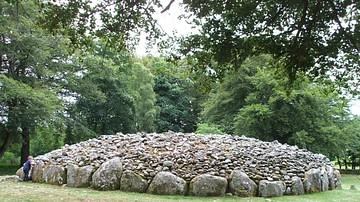
Definition
Clava Cairns
Clava Cairns is an early Bronze Age site in Scotland, located east of the city of Inverness, consisting of three well-preserved cairns (two of which are passage graves) and a number of free-standing stones strategically placed for astronomical...
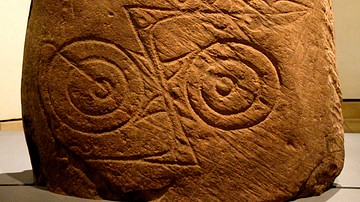
Image
Pictish Stone, Invereen, Scotland
Pictish stones are a form of monumental steles and are mainly found in the eastern part of Scotland and around the Clyde-Forth line. This stone was found in Invereen, Moy, Inverness-shire, Scotland. The stone was carved with Pictish symbols...
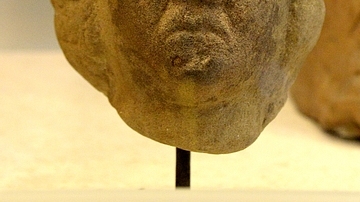
Image
Head of a Local Deity, Birrens, Scotland
In the Roman empire deities which were not part of normal Roman beliefs were often readily adopted and worshiped. On the frontiers, such as Scotland, soldiers worshiped local gods and goddesses. This is a head of an unknown local deity. From...

Image
James III of Scotland with St. Andrew
A c. 1480 painted panel from an altarpiece by Hugo van der Goes showing Saint Andrew presenting James III of Scotland (r. 1460-1488). On the left is James' son, future James IV of Scotland (r. 1488-1513). National Gallery of Scotland, Edinburgh...